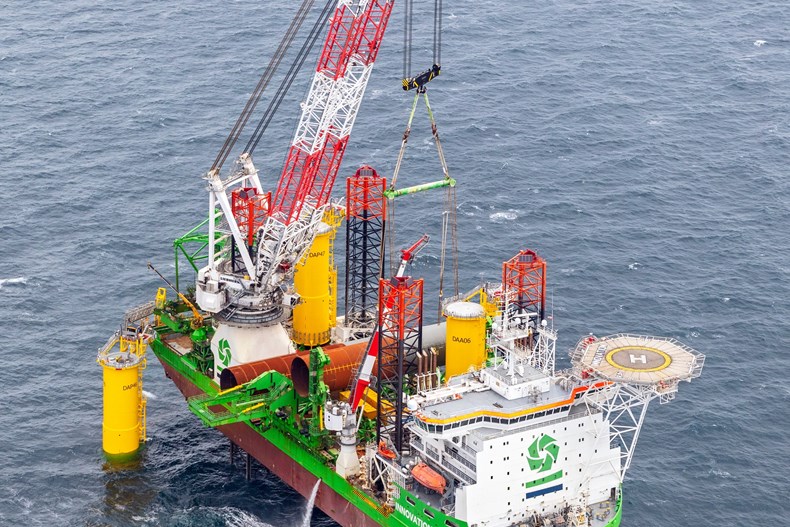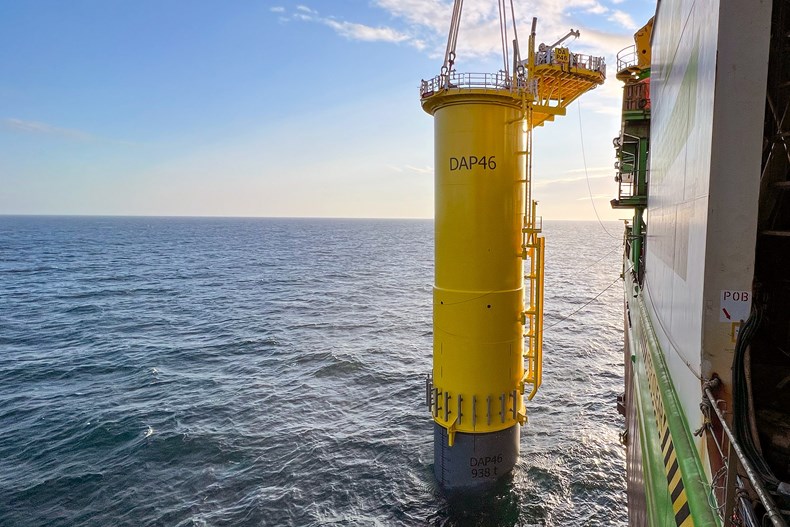Wind Energy – Dogger Bank
The installation of the first foundations for 277 wind turbines at Dogger Bank Wind Farm in the North Sea has commenced this week.

The wind farm, which will be located more than 130km off the North East coast of England, will be the largest offshore wind farm and when operational will generate 3.6GW of energy – enough to power 6 million UK homes annually on completion.
The world-class renewable energy project is making a major contribution to SSE’s plans to invest in excess of £24bn this decade in Great Britain’s electricity infrastructure system.
Dogger Bank Wind Farm, a joint venture between SSE Renewables (40%), Equinor (40%) and Eni Plenitude (20%), is made up of three offshore wind farm sites in the North Sea. SSE Renewables is the lead operator for the development and construction of Dogger Bank Wind Farm, while Equinor will be lead operator of the wind farm on completion for its expected operational life of around 35 years.
The foundations are up to 72m in length, weigh on average 1057 tonnes, and include the world’s largest 8m offshore wind flange.
The design includes the world’s first split-level transition piece for safe installation and operation, with installation works being led by Seaway and supported by DEME Offshore.
Installation of GE Renewable Energy’s ground-breaking Haliade-X turbines onto each of the installed turbine foundations will commence from Spring 2023.
Steel manufactured by Tata Steel in Wales and processed in Corby and Hartlepool is being used in the supporting components of the transition pieces, while South Tyneside-based Metec and Rochdale-based Granada Material Handling have also won contracts with Smulders to support this innovative and world-leading project.

Over the three-year installation program for the three phases of Dogger Bank Wind Farm, a total of 277 monopiles and transition pieces will be loaded onto installation vessels in Rotterdam ahead of transfer out to the offshore wind farm site deep into the North Sea. Using dynamic positioning technology, the vessels will pinpoint the installation site in the seabed at which point a monopile measuring up to 72m (equivalent to more than 6 double-decker buses end-to-end), will be upended and transferred to a pile gripper, before being lowered into the seabed.
A hammer will be used to drive the monopile to the design depth in the seabed before a guidance system aligns the installation of the record-breaking 8-metre flanges which act as a connection for the transition piece which is then installed onto the monopile. The foundations require 152 giant M80 bolts to secure them before a cover is inserted onto the top of the transition piece to leave it watertight.
Seaway 7 was awarded the tier one contract for foundation installation on all three phases of Dogger Bank Wind Farm, with sub-contractor DEME deploying its Innovation vessel for the installation of the first foundations on Dogger Bank A. Following the DEME Innovation, the Seaway Strashnov will deploy on Dogger Bank A to continue the foundation installation.
Lucien Romagnoli, Business Unit Director Renewables at DEME Offshore, said: “We are extremely proud to be supporting the construction of the world’s largest offshore wind farm with foundation installation and later in the program as inter-array cable installer. These unique foundations are huge but also, they are technically complex. This is an important moment for the offshore wind industry and the energy transition. It is wonderful to be working alongside like-minded partners with the joint goal of achieving a net-zero energy system.”


